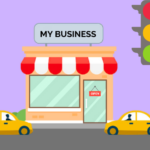In today’s competitive business landscape, acquiring new customers is vital for sustainable growth and success. Customer acquisition refers to the process of attracting and converting prospects into paying customers. It involves strategic marketing efforts, lead generation, nurturing, and ultimately converting potential customers into loyal brand advocates. In this blog post, we will delve into the meaning of customer acquisition, explore its benefits, and discuss how businesses can improve their acquisition strategies.
What Is Customer Acquisition?
Customer Acquisition – It is the process of gaining new customers for a business. It involves various marketing and sales activities aimed at generating leads and converting them into paying customers. The goal is to build a strong customer base and expand market reach.
How to Measure Customer Acquisition?
Conversion Rate |
The conversion rate is a crucial metric for measuring customer acquisition success. It represents the percentage of prospects or leads that convert into paying customers. By analyzing conversion rates, businesses can identify areas for improvement in their sales and marketing strategies.
To attract people’s attention and persuade them to become customers, brands strive to match their needs, wants, and expectations. Companies acquire large amounts of data on their prospects both online and offline using digital technologies and employ various tactics to grab their attention. As a result, businesses gain their affection and trust, as well as a greater number of devoted customers.
Customer Acquisition Cost |
Customer acquisition cost (CAC) is a common metric for determining how effective your customer acquisition activities are. It can be used to calculate the marketing cost per customer acquired over a period of time or for a particular marketing approach. This information can be used to assess the overall success of your acquisition operations. It can also assist in determining which techniques are yielding the best results. Dividing marketing costs by the number of consumers obtained is a typical method for calculating customer acquisition costs.
The Rate of New Customer Acquisition |
Tracking the rate of new customer acquisition allows businesses to gauge the effectiveness of their marketing efforts. It measures how quickly a company is acquiring new customers within a specific period. A high rate of acquisition indicates a successful marketing strategy, while a low rate may indicate the need for improvement or strategy adjustment.
The Rate of Visits |
Monitoring the rate of visits, both online and offline, is essential to understanding customer acquisition. This metric measures the number of potential customers who interact with a business’s website, physical store, or promotional materials. Analyzing this rate helps identify the effectiveness of marketing campaigns in attracting potential customers.
What Has Been the Best Outcome of Customers Acquired via Creator Campaigns?
Customers acquired through creator campaigns often yield significant benefits for businesses. They tend to be highly engaged, loyal, and have a genuine interest in the products or services being offered. Additionally, customers acquired via creator campaigns often have a strong affinity for the brand and are more likely to advocate for it within their social circles. This word-of-mouth promotion can lead to organic growth and attract new customers without extensive marketing efforts.
How to Improve Customer Acquisition?
1. Define and Understand Your Target Audience |
Identifying and understanding your target audience is crucial for effective customer acquisition. Conduct market research, gather demographic data, and create buyer personas to tailor your marketing strategies and messages to resonate with your ideal customers.
2. Craft Compelling Marketing Messages |
Crafting compelling marketing messages that highlight the unique value proposition of your products or services is essential. Clearly communicate how your offerings solve customer pain points and provide distinct advantages over competitors. Use persuasive language, storytelling techniques, and emotional appeals to capture the attention and interest of potential customers.
3. Implement Multichannel Marketing |
A multichannel marketing approach maximizes your reach and engagement with potential customers. Leverage various channels, such as social media, email marketing, search engine optimization (SEO), content marketing, and paid advertising, to create a cohesive and consistent brand presence across platforms.
4. Enhance Customer Experience |
Delivering an exceptional customer experience is crucial for customer acquisition and retention. Provide personalized interactions, prompt customer support, and seamless purchasing processes. Prioritize customer satisfaction to build long-lasting relationships and encourage positive word-of-mouth referrals.
Customer Acquisition Process |
1. Lead Generation |
Generate leads through various channels, such as website forms, social media engagement, content downloads, or event registrations. Offer valuable incentives, such as exclusive content or discounts, to entice potential customers to share their contact information.
2. Lead Nurturing |
Once you have leads, engage with them through targeted and personalized communication. Provide relevant content, address their pain points, and build trust by establishing your expertise and credibility.
3. Sales Conversion |
Convert leads into paying customers through effective sales strategies. Provide compelling offers, highlight the unique benefits of your products or services, and address any concerns or objections they may have.
4. Onboarding and Retention |
After acquiring new customers, focus on providing an exceptional onboarding experience. Ensure they understand how to utilize your offerings effectively and provide ongoing support to foster long-term customer loyalty.
Benefits of Customer Acquisition |
1. Business Growth |
Acquiring new customers fuels business growth by expanding the customer base, increasing sales, and generating revenue. It allows businesses to tap into new market segments and diversify their customer portfolio.
2. Competitive Advantage |
Effective customer acquisition strategies give businesses a competitive edge in the market. By attracting and converting new customers, businesses can differentiate themselves from competitors and establish a strong market position.
3. Increased Brand Awareness |
Acquiring new customers helps increase brand awareness as satisfied customers share their positive experiences with others. This word-of-mouth promotion can lead to organic growth and attract new customers without extensive marketing efforts.
4. Higher Customer Lifetime Value |
Customers acquired through effective acquisition strategies tend to have a higher customer lifetime value. They are more likely to make repeat purchases, engage with additional products or services, and become loyal brand advocates.
Summing Up |
Customer acquisition is a fundamental aspect of business growth and success. By implementing effective acquisition strategies, businesses can expand their customer base, increase revenue, and establish a competitive advantage. Through lead generation, nurturing, and successful conversion processes, companies can build long-lasting relationships with customers and unlock the benefits of customer acquisition. To explore how Shergroup can assist you in enhancing your customer acquisition efforts, visit our website at www.shergroup.com.
You can reach us |
By Phone | 0845 890 9200
Website | www.shergroup.com and you can chat to us from here
Email | [email protected]
Facebook | Check out Shergroup on this channel and message us
Twitter | Check out ShergroupChat on this channel and message us
LINKEDIN | Check out Shergroup’s LINKEDIN feed – and please FOLLOW us!
Instagram | Check out ShergroupChatter and follow us!










